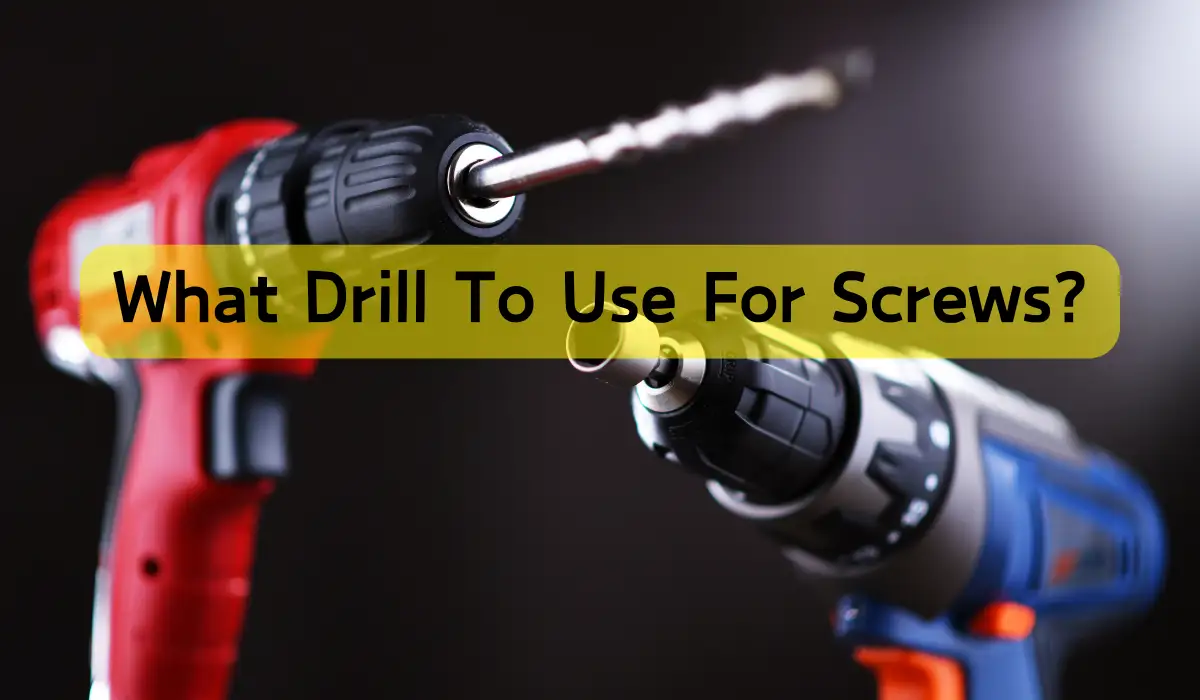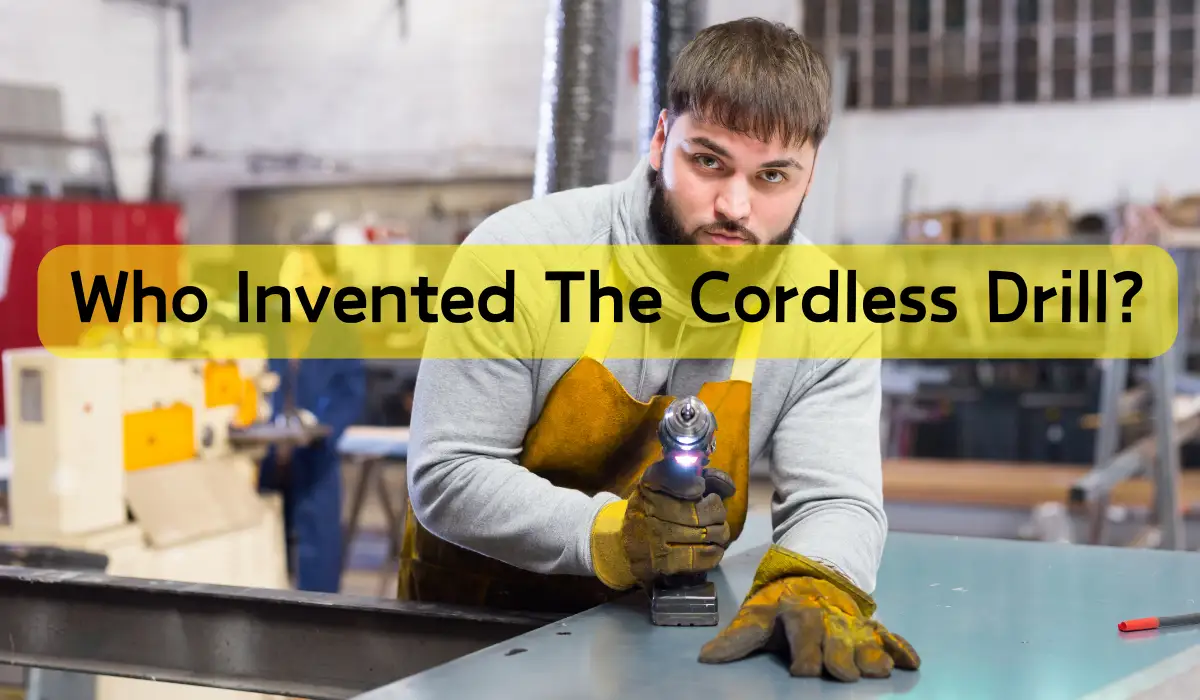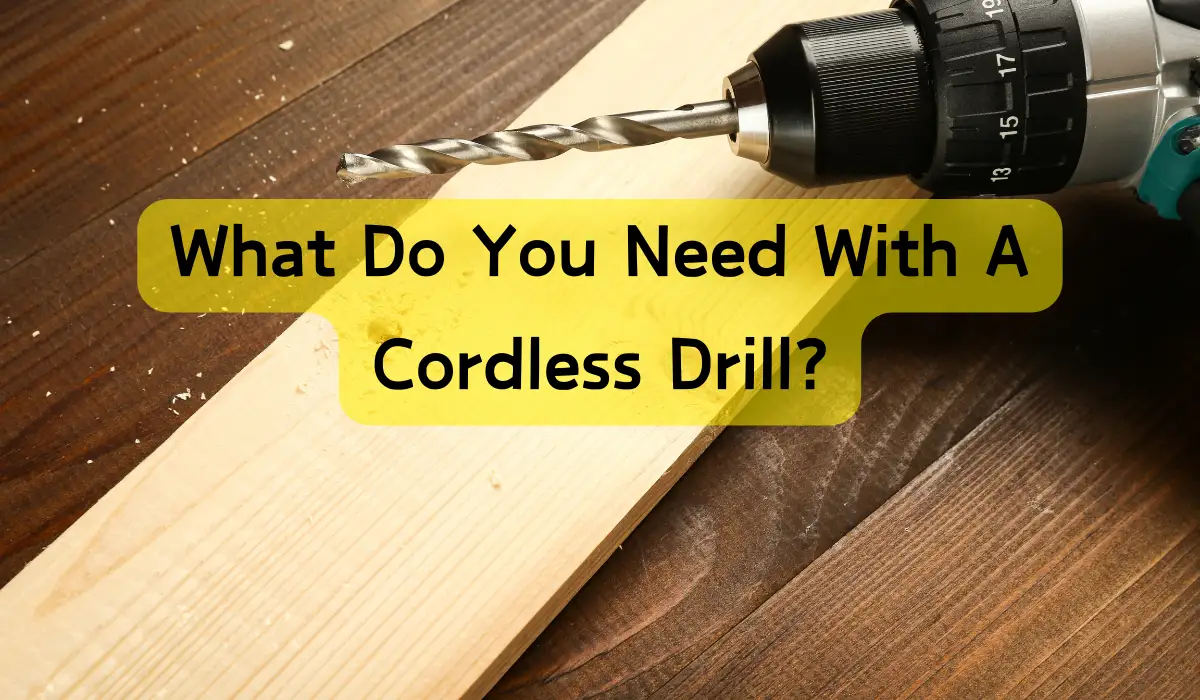When driving screws, you need a drill that fits the task. For convenience and flexibility, consider a cordless drill, ideal for tight spaces or on-the-go projects. For heavy-duty tasks, an impact driver delivers more torque and efficiency. Brushless motor drills provide more power and durability, while right angle drills offer precise control in tight spaces. But, with so many options, it’s essential to choose the right drill for your specific screw-driving needs. From chuck size to drill bits, there’s more to weigh – stay ahead of your project by understanding the nuances of drill selection.
Jump to
Key Takeaways
• Consider the type of screws being driven and the required torque when choosing a cordless drill for screw driving tasks.
• Impact drivers deliver more torque than traditional drills, making them perfect for heavy-duty screw driving applications.
• Choose the right drill speed for the task, with low speeds for delicate tasks and high speeds for heavy-duty screwing.
• Select the correct drill bit for the specific screw head type, such as flathead, Phillips, hex, or Torx, to facilitate proper screw installation.
• Verify the drill’s chuck size can handle the required screw size, considering the type of screws to be worked with most often.
Cordless Drills for Screw Driving
When it comes to screw driving, cordless drills have become a staple in many workshops and households, offering unparalleled convenience and flexibility. You’ll appreciate the freedom to move around without being tethered to a power outlet, making it easier to tackle tasks in tight spaces or on the go. Plus, cordless drills are often lighter and more ergonomic, reducing fatigue during extended use.
When choosing a cordless drill for screw driving, consider the type of screws you’ll be working with most often. If you’re primarily driving small to medium-sized screws, a drill with a lower torque setting (around 200-300 in-lbs) should suffice. However, if you’ll be working with larger screws or denser materials, look for a drill with higher torque (around 400-500 in-lbs) to guarantee you have the power you need.
Consider the battery type and charging time. Lithium-ion batteries are a popular choice due to their long lifespan and quick recharge times. Look for a drill with a battery that can hold its charge and has a relatively short recharge time, allowing you to get back to work quickly.
Impact Drivers for Heavy-Duty Tasks
For heavy-duty tasks that require intense torque and force, consider reaching for an impact driver, a powerful tool designed to tackle demanding projects and dense materials with ease. You’ll appreciate the extra oomph it provides when driving large screws, lag bolts, or nuts. Impact drivers are ideal for tasks like building decks, installing heavy fixtures, or working with thick metal.
Increased torque: Impact drivers deliver more torque than traditional drills, making them perfect for heavy-duty applications.
Faster screw driving: With their high-torque output, impact drivers can drive screws faster and more efficiently.
Reduced fatigue: The added power of an impact driver reduces the physical strain on your hands and wrists, making it easier to work for extended periods.
Improved control: Many impact drivers come with adjustable torque settings, allowing you to fine-tune the power to suit your specific task.
Brushed Vs Brushless Motor Drills
Brushed motor drills have been around for decades and are known for their simplicity and affordability. They use a brush to transfer power from the stator to the rotor, which generates torque. While they’re reliable and easy to maintain, they’re also prone to wear and tear, and their brushes can wear out over time.
Brushless motor drills have gained popularity in recent years due to their increased efficiency and durability. They use electronic sensors and controllers to regulate power distribution, eliminating the need for brushes. This design makes them more reliable, efficient, and longer-lasting.
Brushless drills also tend to produce more torque and have a longer lifespan compared to brushed drills. When choosing between brushed and brushless motor drills, consider your specific needs and preferences. If you’re looking for a cost-effective option for light to moderate tasks, a brushed drill might be sufficient.
However, if you’re willing to invest in a more advanced and durable drill for heavy-duty tasks, a brushless drill is the better choice.
Choosing the Right Drill Speed
Now that you’ve decided on a drill type, it’s time to think about the speed at which you’ll be driving those screws. The right drill speed is vital for efficient and accurate screwing.
Choosing the right drill speed depends on the type of screw, material, and application.
- Delicate tasks: For small screws, electronics, or precision work, use a low speed (around 300-500 RPM).
- General-purpose screwing: For most wood, plastic, or metal screws, a medium speed (around 1,000-1,500 RPM) is suitable.
- Heavy-duty screwing: For large screws, thick materials, or high-torque applications, use a high speed (above 2,000 RPM).
- Specialized tasks: For specific tasks like drilling into concrete or metal, consult the manufacturer’s recommendations for ideal drill speed.
Drill Bits for Screw Head Types
With the right drill speed in place, you’ll need to make certain you’re using the correct drill bits to drive screws with different head types effectively.
Different screw head types require specific drill bits to facilitate proper screw installation and to prevent damage to the screw or surrounding material. For instance, slotted screws require a flathead drill bit, while Phillips head screws need a Phillips head drill bit. If you’re working with hex- or Torx-head screws, you’ll need a hex or Torx driver bit, respectively.
Using the wrong drill bit can lead to stripped screws, damaged materials, or even injury.
To avoid these issues, it’s vital to select the correct drill bit for the specific screw head type you’re working with. It’s also imperative to verify the drill bit is in good condition, as a dull or worn-out bit can cause more harm than good.
Electric Drills for Precise Control
When tackling projects that demand precision, electric drills offer unparalleled control, allowing you to drive screws accurately and efficiently. These drills provide the finesse you need to tackle intricate tasks, making them ideal for applications where precision is paramount.
When it comes to electric drills, you’ll appreciate the advantages they bring to your projects.
- Variable speed control: Adjust the speed to suit the screw type and material, ensuring precise control over the drilling process.
- Compact design: Electric drills are often lightweight and compact, making them easy to maneuver in tight spaces.
- Precise torque control: Electric drills typically offer adjustable torque settings, allowing you to fine-tune the drill’s power to avoid stripping screws or damaging materials.
- Ergonomic design: Electric drills are designed to fit comfortably in your hand, reducing fatigue and improving overall control.
With an electric drill, you’ll be able to tackle projects that require precision and finesse, from assembling furniture to installing cabinetry. By choosing the right drill for the task, you’ll achieve professional-looking results with ease.
Pneumatic Drills for High-Torque Needs
For projects that demand high-torque power, pneumatic drills deliver the force you need to drive large screws and tackle heavy-duty tasks with ease.
These powerful tools are ideal for construction, automotive, and industrial applications where you need to drive big screws or bolts quickly and efficiently. Pneumatic drills are available in a range of sizes and styles, from compact models for smaller tasks to heavy-duty units for massive projects.
When choosing a pneumatic drill, consider the air compressor’s CFM (cubic feet per minute) rating, as well as the drill’s chuck size and speed settings.
You’ll also want to think about the type of screws you’ll be driving and the material you’re working with. Some pneumatic drills come with specialized features like adjustable torque settings or built-in LED lights to illuminate your work area.
With the right pneumatic drill, you’ll be able to tackle even the toughest projects with confidence and precision.
Right Angle Drills for Tight Spaces
Tight spaces won’t cramp your style with right angle drills, which can slip into narrow openings and corners to drive screws at a 90-degree angle. You’ll appreciate the flexibility of these drills when working on projects that require precision and control. Right angle drills are perfect for tasks that require you to reach into tight spaces, such as assembling furniture, installing cabinets, or repairing appliances.
Benefits of using right angle drills:
Increased accessibility: Reach into tight spaces and corners with ease.
Improved precision: Drive screws at a 90-degree angle for precise control.
Enhanced versatility: Use right angle drills for a variety of tasks, from furniture assembly to appliance repair.
Reduced fatigue: Work comfortably in tight spaces without straining your back or shoulders.
With a right angle drill, you’ll be able to tackle projects that would be impossible with a traditional drill. Its compact design and adjustable head make it an essential tool for any DIY enthusiast or professional.
Drill Chuck Size and Screw Size
Your drill’s chuck size determines the maximum screw size it can handle, and choosing the right combination is essential for efficient drilling and screwing.
A drill’s chuck size is measured in inches or millimeters and refers to the maximum diameter of a drill bit or screw that can fit into the chuck.
A larger chuck size doesn’t always mean it’s better, as it may compromise the drill’s precision and control.
When selecting a drill, consider the type of screws you’ll be working with most often.
For general-purpose drilling and screwing, a 1/2-inch or 13mm chuck size is a good starting point.
This size can handle most standard screws and drill bits.
However, if you’ll be working with larger screws or specialty bits, a 3/8-inch or 10mm chuck size might be more suitable.
Remember to check the drill’s specifications to verify it can handle the screw size you need.
Frequently Asked Questions
Can I Use a Drill for Screwing Into Concrete or Brick?
When working with concrete or brick, you’ll need a specialized drill bit designed for masonry, as a regular drill won’t cut it. Invest in a hammer drill or a rotary hammer for the job.
What Is the Best Drill for Screwing Into Metal Studs?
When screwing into metal studs, you’ll need a drill that’s up to the task. Look for a high-torque drill with a robust motor, such as a cordless hammer drill or a right-angle drill, to drive screws efficiently and accurately.
Do I Need to Use a Drill With a Hammer Function for Decking?
When building decking, you’ll likely need a drill with a hammer function to drive screws into hardwood or dense materials, but for softer woods, a regular drill will suffice.
Can I Use a Drill With a Screwdriver Bit for Large Screws?
You can use a drill with a screwdriver bit for large screws, but consider the screw’s material and size to guarantee the bit can handle the torque and avoid stripping or breaking.
Are Drill Batteries Interchangeable Between Brands?
You’re wondering if drill batteries are interchangeable between brands. Generally, no, they’re not, as each brand has its own proprietary design and charging system, making it unsafe and often impossible to swap batteries across brands.



